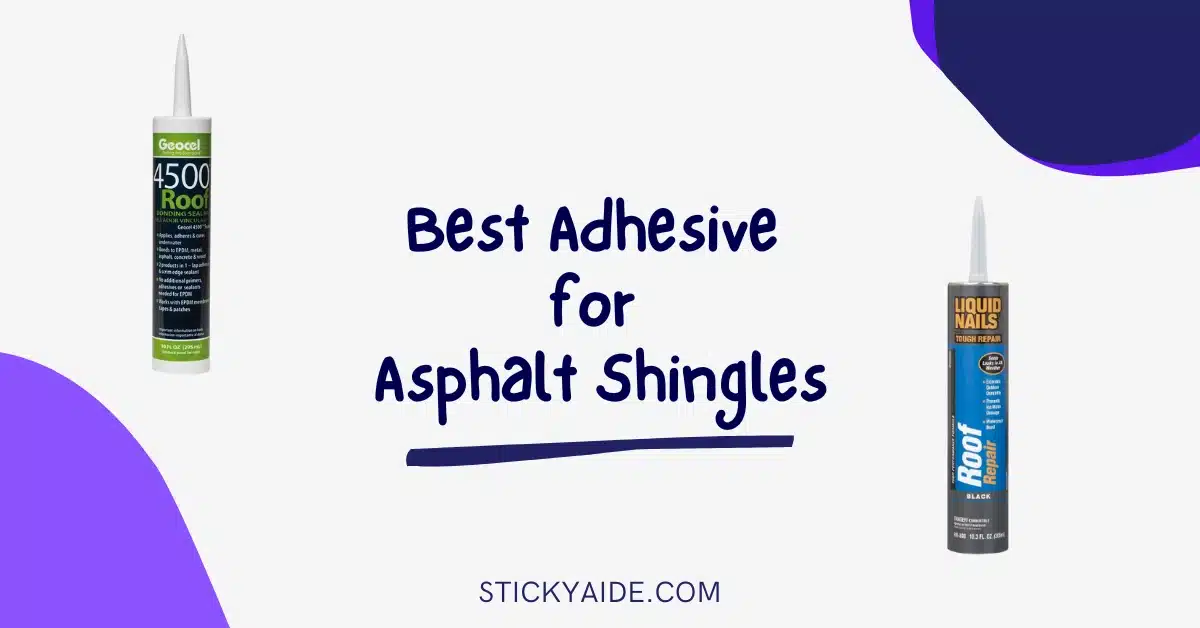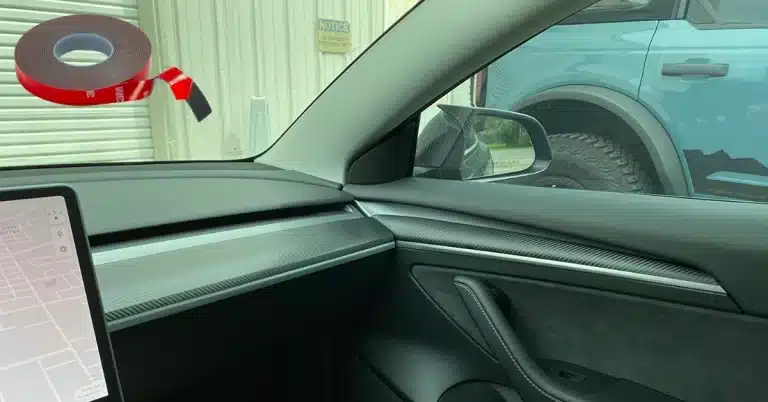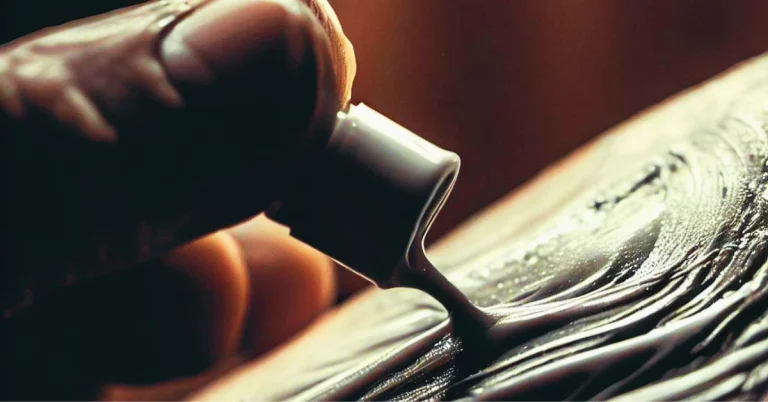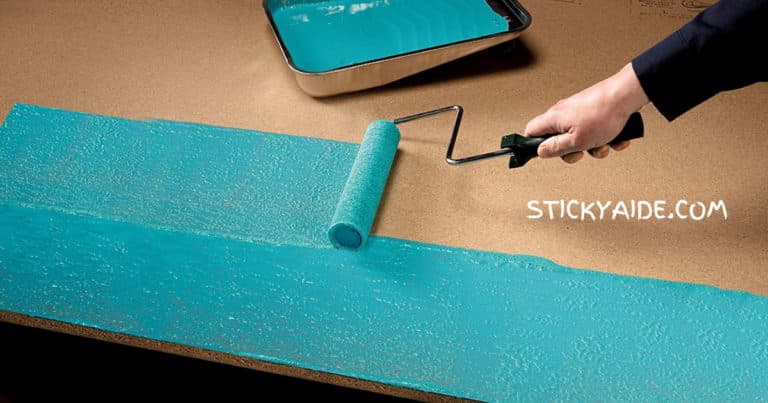For homeowners looking for roofing materials, asphalt shingles are a popular choice. Their affordability, durability, and versatility make them a top choice.
However, the installation of asphalt shingles requires careful attention to detail, including the choice of adhesive.
The right adhesive can significantly impact the longevity and performance of your roofing system.
I will explore the best adhesive for asphalt shingles in this article, so you can make an informed decision.
Read More: Best Subfloor Adhesive
Reviews of Top 2 Best Adhesives for Asphalt Shingles
#1. Liquid Nails Roof Repair Adhesive

Liquid Nails Roof Repair Specs and Features
- Ideal for waterproofing, repairing, and sealing roofs
- Has a low-VOC formula that remains flexible over time
- Seals leaks in all weather and prevents ice/water damage
- Comes in a 10.3-ounce cartridge
Liquid Nails Roof Repair Review
If you are looking for a reliable and easy-to-use product to fix your roof leaks, you might want to consider Liquid Nails Roof Repair.
It is a high-quality product that can help you fix your roof problems quickly and easily. It is a versatile sealant that can adhere to various roofing materials and create a waterproof bond.
It can also resist harsh weather conditions and maintain its durability and flexibility over time.
This product is designed to seal and repair various roof areas, such as chimneys, flashings, roof decks, and vents. It can also prevent ice and water damage by creating a waterproof bond.
One of the best features of this product is that it can be applied in any weather condition, even on wet roofs or in rain or snow. It also does not freeze, so you can use it all year round.
Standard caulking guns can be used to apply this product since it comes in a convenient cartridge. It is easy to apply and spread evenly on the roof using a standard caulking gun.
You just need to cut the nozzle at the desired angle and size, puncture the inner seal, and apply the sealant with firm pressure.
You can level any excess sealant with a trowel or putty knife and let it dry for 24 hours. The product has a black color and a smooth consistency that blends well with most roof surfaces.
Many customers have praised Liquid Nails Roof Repair for its effectiveness and reliability.
Liquid Nails Roof Repair Pros and Cons
Pros
- Stops leaks fast and effectively
- Waterproofs and seals various roof areas
- Withstands extreme temperatures
- Works on wet roofs and in any weather condition
- Does not freeze
- Easy to apply with a caulking gun
- Blends well with most roof surfaces
Cons
- More than one application is needed for larger or deeper cracks
- May not adhere well to some materials, such as rubber or plastic
- Difficult to remove or clean up once dried
#2. GEOCEL 4500 Roof Bonding Sealant
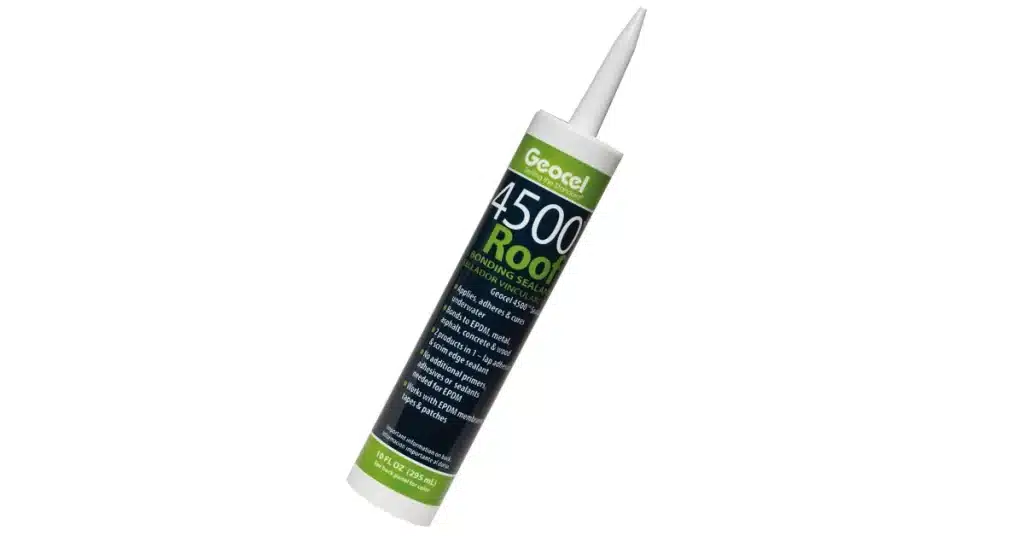
GEOCEL 4500 Roof Bonding Sealant Specs and Features
- It does not require any additional adhesives or sealants
- Also suitable for core/test cuts and night seals
- Works with asphalt shingles, metal, steel, wood, concrete, primed PVC etc.
GEOCEL 4500 Roof Bonding Sealant Review
If you are looking for a reliable and versatile roof sealant that can handle any weather condition and roofing material, you might want to consider the GEOCEL 4500 Roof Bonding Sealant.
This product is specially formulated to bond to various roofing materials and withstand harsh weather conditions.
It can even be applied and cured underwater, which makes it ideal for repairing leaks or cracks in shingles, flashing, or gutters.
It also serves as a lap adhesive and a scrim edge sealant, which means you don’t need to buy extra products for your roofing system.
Many customers have praised this product for its ease of use, strong adhesion, and long-lasting performance.
Whether you need to seal a lap joint, a scrim edge, a test cut, or a night seal, this product can handle it all.
The sealant is easy to use and comes in a standard cartridge that fits most caulking guns. You can use it to seal laps, edges, cuts, and seams on your roof, as well as to attach patches or membranes.
The sealant is non-flammable and flexible, which means it won’t crack or shrink over time. It also has a low odor and a smooth consistency that makes it easy to apply and tool.
The sealant comes in two colors: white and black. You can choose the one that matches your roof color or preference. The sealant has a long shelf life and can be stored at room temperature.
GEOCEL 4500 Roof Bonding Sealant Pros and Cons
Pros
- Bonds to many common roofing substrates
- Withstands ponding water
- Applies and cures underwater
- Works as a lap adhesive and a scrim edge sealant
- Flexible and non-flammable
- Low odor and smooth consistency
- Comes in two colors: white and black
- Long shelf life
Cons
- Not suitable for unprimed TPO or PVC membranes
- Not compatible with white EPDM (black only) or black EPDM (white only)
- Not for potable water or food applications.
Read More: Best Construction Adhesive For Concrete
How To Glue Asphalt Shingles?
If you have a specific reason to glue asphalt shingles (for a temporary repair, for example), you can follow these steps:
Materials and Tools Needed:
- Asphalt shingles
- Roofing adhesive or asphalt cement (roofing tar)
- Caulk gun or trowel
- Utility knife
- Roofing felt (optional)
- Roofing underlayment (optional)
Steps to Glue Asphalt Shingles:
1. Prepare the Surface:
Ensure that the roof surface is clean, dry, and free of debris, old shingles, and any protruding nails.
If necessary, install roofing felt or underlayment as a base layer. This step is essential for proper waterproofing and can provide a smoother surface for gluing the shingles.
2. Mix or Prepare the Adhesive:
If you’re using roofing adhesive or asphalt cement in a caulk gun, load it into the gun according to the manufacturer’s instructions.
If using roofing tar, scoop it out of the container and into a trowel.
3. Apply Adhesive:
Start at the lower edge of the roof and work your way up. Apply a generous amount of adhesive to the back of the asphalt shingle using a caulk gun or trowel.
Make sure to cover the edges and corners thoroughly. If using roofing tar, apply a continuous bead along the edges of the shingle.
5. Press Shingle in Place:
Carefully place the adhesive-coated shingle in its desired position on the roof. Press down firmly to ensure good contact between the shingle and the roof surface.
6. Repeat the Process:
Continue applying adhesive to each subsequent shingle and overlapping them as required for the specific roofing pattern (e.g., staggered or straight).
Make sure each shingle is securely attached and aligned with the others.
7. Allow to Dry:
Place a heavy object, such as a brick, on top of the shingle to hold it in position during drying. After 24 hours, the sealant or cement will be dry. Remove the heavy object from the shingle.
Are Asphalt Shingles Nailed or Glued?
Usually, asphalt shingles are nailed to the roof deck instead of being glued. Nailing shingles is the proper and recommended way to install them, as it ensures optimal performance and durability.
Gluing shingles may not provide adequate adhesion and may cause them to come loose or leak.
What Is the Maximum Temperature for Asphalt Shingles?
The maximum temperature for asphalt shingles depends on the type of asphalt and the stage of installation.
The softening point of asphalt used in roofing shingles ranges from 140°F to 205°F, depending on the grade.
However, this does not mean that the shingles can withstand such high temperatures without damage.
Can I Wash Asphalt Shingles with Water?
Yes, you can wash asphalt shingles with water, but you should also use a cleaning solution to remove dirt, algae, moss, or stains from the roof. Water alone may not be enough to clean the shingles thoroughly.
Last Opinion
Selecting the best adhesive for asphalt shingles is a critical decision that can impact the long-term performance and durability of your roofing system.
Each adhesive option mentioned here has its advantages and disadvantages, and the choice ultimately depends on your specific needs, budget, and climate conditions.
My recommendation would be Liquid Nails Roof Repair if you had to pick one product that stands out among the rest.
The product comes in a convenient cartridge and can be used to seal and repair various roof areas.

